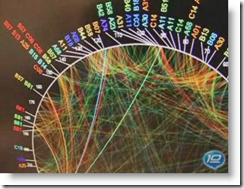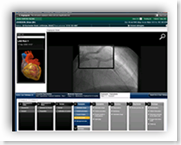The one item addressed here is our current design as described as an “island”, with each hospital having their own systems and formats. Integration and communication is the rule of today’s game. I have written quite a bit about the common user interface and it certainly would be nice if the same user screens were the same or similar at every facility for charting and data entry. The personal health record is becoming a big part of the puzzle as well, with medical devices being able to transmit information back to a computer with a blue tooth or wireless connection and the market of devices will continue to grow as well.
Hospitals are working to integrate with physicians on staff. Will vendors cooperate? I think so as it is business for everyone to work together. Related article here.
HEALTHCARE TECHNOLOGY IS MOVING AT SUCH A FAST PACE TODAY, IT IS HARD TO MISS ALMOST EVERYWHERE YOU TURN. THE PACE TODAY IS ALSO MUCH FASTER THAN WHAT ANY OF US HAVE EXPERIENCED IN THE PAST SO THE KEY IS TO WORK TOGETHER AND KEEP IT SIMPLE SO WE CAN ALL BENEFIT. BD
 The health-care industry is about to undergo a global revolution driven by a force it can no longer resist: information technology.
The health-care industry is about to undergo a global revolution driven by a force it can no longer resist: information technology.
While hospitals and other care providers have long been quick to adopt breakthrough technology in medical devices, procedures and treatments, far less attention has focused on innovations in networking and communications.
The most noticeable changes will be the offshore outsourcing of diagnostic services -- particularly imaging, such as X-rays and mammograms -- and consultations by specialists.
Outsourcing and offshoring of medical and nonmedical services will increase, providing more efficient health care at the most cost-effective rates; systems integrations will allow more medical records to be transferred swiftly and securely; efforts to monitor the safety of medicines will gain global access to data; and professionals and patients will find authoritative and up-to-date information on every specialty online.
But current hospital information systems were designed to function as islands with their own rules and formats, making a patient's file at one hospital difficult for another to read. Not only are different languages and measures sometimes used, but conflicts between encryption and other software can make it impossible for systems to exchange data electronically.
Related Reading:
HealthVault Has New Features Including Fax Services for $9.00 a year – Fax to the Vault!
Going live with Microsoft HealthVault - Chart Integration at the Hospital
Microsoft HealthVault and RelayHealth (McKesson) to Connect Doctors and Patients
Hoag Hospital Selects eClinicalWorks for Its EHR Subsidy Program- Newport Beach, CA
Eclipsys acquisition of Medinotes stands to open doors for Hospital subsidized medical records and integration
http://online.wsj.com/article/SB122426733527345133.html#articleTabs%3Darticle
Technorati Tags: Microsoft,HealthVault,integration,Stark Law,EMR,EHR,medical records,technology,healthcare,Common User Interface,Hospital



0 comments :
Post a Comment